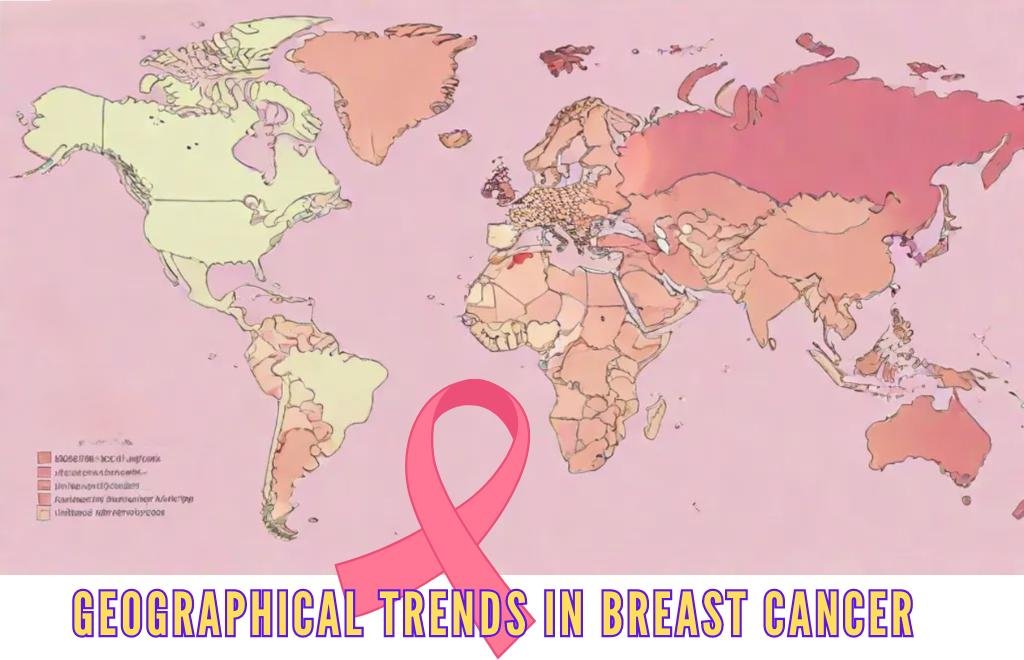Introduction to Breast Cancer in the US
Breast cancer continues to be a major health concern in the United States, affecting thousands of individuals and their families every year. By understanding current statistics and trends, we can gain insight into the state of breast cancer in 2024, evaluate the progress made in the fight against the disease, and determine where more work is needed.
Understanding Breast Cancer

What is Breast Cancer?
Breast cancer occurs when cells in the breast grow uncontrollably, forming a tumor that can often be felt as a lump. It typically starts in the ducts or lobules, and if left unchecked, may spread to other parts of the body. The most common types are ductal carcinoma in situ (DCIS) and invasive ductal carcinoma (IDC).
Types of Breast Cancer
Beyond IDC and DCIS, there are other forms such as triple-negative breast cancer and inflammatory breast cancer, which are less common but often more aggressive. Understanding these variations helps patients and doctors personalize treatments for better outcomes.
Why Understanding Statistics is Crucial

Awareness and Early Detection
Statistics play a crucial role in raising awareness about breast cancer risks and promoting early detection. By knowing who is most at risk, campaigns can be targeted more effectively, leading to earlier diagnoses, which significantly improves survival chances.
Role in Policy and Funding
Governmental and organizational policies often rely on statistical data to allocate resources. The number of new cases and deaths informs funding for research, healthcare infrastructure, and community support initiatives.
Breast Cancer Statistics for 2024

Projected New Cases
How Many New Cases are Expected?
In 2024, it’s estimated that over 290,000 new cases of breast cancer will be diagnosed in the US. This number includes both invasive and non-invasive (in situ) types of breast cancer, highlighting the scale of the disease.
Trends Compared to Previous Years
Compared to previous years, there has been a slight increase in the overall number of breast cancer diagnoses. The rise can be attributed to a combination of better detection technologies and an aging population, which is more susceptible to developing cancer.
Mortality Rates and Survival Statistics
Death Rate Overview
The death rate from breast cancer has been steadily declining over the past decade. In 2024, it is projected that around 43,000 deaths will occur due to breast cancer. This decline is largely due to advancements in treatment and increased awareness, leading to earlier detection.
Advances in Survival Rates
The 5-year survival rate for breast cancer patients diagnosed in 2024 remains high, at approximately 90%. This figure has improved significantly over the years, showcasing the impact of improved medical interventions and public health campaigns.
Recurrence Statistics
Probability of Recurrence by Stage
Recurrence is a major concern for many breast cancer survivors. The probability of recurrence varies by stage at the time of diagnosis. For example, patients with early-stage breast cancer have a significantly lower chance of recurrence compared to those diagnosed at more advanced stages.
Long-Term Prognosis Factors
Factors such as tumor size, lymph node involvement, and hormone receptor status play a role in the long-term prognosis. Personalized treatments have been shown to decrease the recurrence rates for many patients.
Demographic Insights on Breast Cancer

Incidence by Age Group
Highest Risk Age Categories
Breast cancer incidence increases with age, with the highest number of cases occurring in women aged 55-74. This demographic trend highlights the importance of regular screening, particularly for older women.
Differences by Ethnicity and Race
Highest and Lowest Incidence Rates
White women have the highest incidence rate of breast cancer, while Black women have the highest mortality rate. Disparities in outcomes often result from differences in access to healthcare and the availability of early detection services.
Access to Healthcare and Outcomes
Lack of access to preventive care and treatment options can lead to worse outcomes for certain ethnic groups. Efforts are underway to close these gaps through targeted outreach and community-based healthcare programs.
Gender Differences
Male Breast Cancer Cases in 2024
Breast cancer in men is rare but not negligible. Approximately 2,500 new cases are expected in 2024. Awareness remains crucial, as men often face delays in diagnosis due to lack of knowledge that they too can be affected.
How Outcomes Differ for Men
Men diagnosed with breast cancer often have worse outcomes, partly because the disease is usually detected at a later stage. Education and awareness campaigns targeted towards men could help improve early detection rates.
Geographical Trends in Breast Cancer

Regional Incidence Rates
States with Highest Cases
In 2024, states such as California, Florida, and Texas are expected to report the highest numbers of breast cancer cases, likely due to their large populations and demographics skewing towards older age groups.
Urban vs. Rural Areas
Breast cancer incidence and outcomes vary significantly between urban and rural areas, with rural populations often experiencing delays in diagnosis due to limited access to screening facilities.
Regional Access to Healthcare
Impact on Early Detection Rates
Early detection rates are generally higher in urban areas due to better access to screening services. Expanding outreach programs in rural regions remains a priority for public health authorities to bridge this gap.
Risk Factors and Prevention Insights

Key Risk Factors for 2024
Genetic Predisposition
BRCA1 and BRCA2 gene mutations continue to be significant risk factors for breast cancer. Genetic testing is increasingly recommended for individuals with a family history of the disease.
Lifestyle Choices and Environmental Factors
Smoking, alcohol consumption, obesity, and a sedentary lifestyle are major modifiable risk factors. Environmental exposures, such as hormone-disrupting chemicals, also contribute to increased breast cancer risk.
Preventive Measures
Screening Recommendations
Mammography remains the gold standard for breast cancer screening, with current guidelines recommending annual or biennial screenings for women over 40, depending on risk factors.
Lifestyle Modifications to Lower Risk
Regular exercise, maintaining a healthy diet, and limiting alcohol can reduce the risk of developing breast cancer. Public health campaigns are focusing on promoting these lifestyle changes as part of a broader prevention strategy.
Advances in Breast Cancer Research and Treatment

Notable Breakthroughs in 2024
New Treatment Options
In 2024, several new drugs have been approved that target specific breast cancer subtypes more effectively, offering hope for patients with resistant forms of the disease.
Technological Advances in Detection
AI-powered imaging techniques have revolutionized mammogram interpretation, improving accuracy and reducing false positives, which has been a source of anxiety for many women.
Progress in Personalized Medicine
Tailored Therapies for Specific Patient Groups
Personalized medicine, which tailors treatment based on a patient’s genetic profile, continues to advance. Targeted therapies have significantly improved outcomes, especially for patients with specific mutations such as HER2-positive cancer.
Impact of Breast Cancer on Society

Emotional and Financial Burden
Psychological Effects on Patients and Families
A breast cancer diagnosis affects not only the patient but also their families. Emotional support services and counseling are critical components of comprehensive cancer care, aimed at improving quality of life.
Cost of Treatment and Support
The financial burden of breast cancer treatment can be overwhelming. Even with insurance, many patients face substantial out-of-pocket costs for surgeries, chemotherapy, and ongoing care.
Role of Advocacy and Awareness Campaigns
Pink Ribbon Campaigns and Beyond
The pink ribbon is a powerful symbol of breast cancer awareness, and campaigns such as Breast Cancer Awareness Month play a key role in raising funds and promoting early detection.
Influence of Non-Profit Organizations
Non-profits like Susan G. Komen and the American Cancer Society provide crucial support in terms of funding research, offering patient services, and advocating for improved access to care.
Future Trends and Predictions

Projected Incidence and Mortality Trends for 2025
Looking ahead to 2025, experts predict a continued slight increase in incidence but a further decline in mortality rates, thanks to improvements in treatment and early detection.
Expected Technological Innovations
Early Detection Technologies on the Horizon
Emerging technologies, such as blood tests for early cancer markers, are expected to revolutionize the way breast cancer is detected, potentially allowing for even earlier intervention and improved survival rates.
Conclusion
Breast cancer remains a significant public health issue in the US, but the outlook is increasingly positive. Advances in detection, treatment, and awareness have led to improved survival rates and a better quality of life for those diagnosed. Continued research and public support are essential to ensure that these positive trends continue and that all individuals, regardless of demographics or geography, have access to the care they need.

